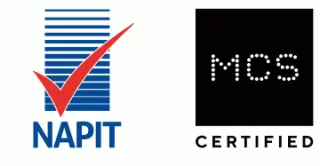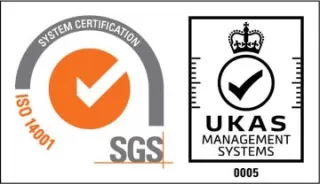Air Source Heat Pumps
How do Air Source Heat Pumps work?
It works by heating a liquid refrigerant, which is then compressed and circulated through your home via radiators or underfloor heating. This system can also provide hot water.
Thanks to modern technology, air source heat pumps can operate efficiently even in cold conditions — extracting heat in temperatures as low as -15°C.
Types of Air Source Heat Pumps
- Air to Water Systems
- Air to Air Systems
- Hybrid Systems
These are the most common and connect to your wet central heating system, providing both space heating and hot water.
These systems only provide space heating. Warm air is distributed via a fan unit mounted inside the home. Some models also offer air conditioning.
These combine air source technology with existing heating systems and can be either air to air or air to water.
Are They Renewable?
While air source heat pumps use electricity to operate, the heat they extract comes from the air — a 100% renewable source. This makes them a low-carbon alternative to traditional heating systems.
How Effective Are They?
Air source heat pumps typically provide heat at a lower temperature than gas or oil boilers. To maintain comfort, they may need to run for longer periods, especially in colder weather. They work best when paired with underfloor heating or oversized radiators, which are more efficient at distributing low-temperature heat.
Top Tips for Getting the Most Out of Your Heat Pump
-
Understand your controls
Learn how to set your system to match your daily routine for optimal performance. -
Service annually
Regular servicing ensures your heat pump runs efficiently and helps identify any faults early. -
Use low, consistent temperatures
Heat pumps are most cost-effective when set to run at a lower temperature over a longer period. -
Insulate your home
Good insulation helps retain heat and reduces the workload on your system. Always keep windows and doors closed
when the pump is running. -
Keep the external unit clear
Ensure there are no items obstructing the unit. Remove snow, ice, or debris to maintain airflow. -
Switch to an economical electricity tariff
This helps ensure your heating savings outweigh your electricity costs. -
Monitor system pressure
Check that the pressure gauge is within the recommended range (usually 1–2 bars). Refer to your user guide for specifics.






